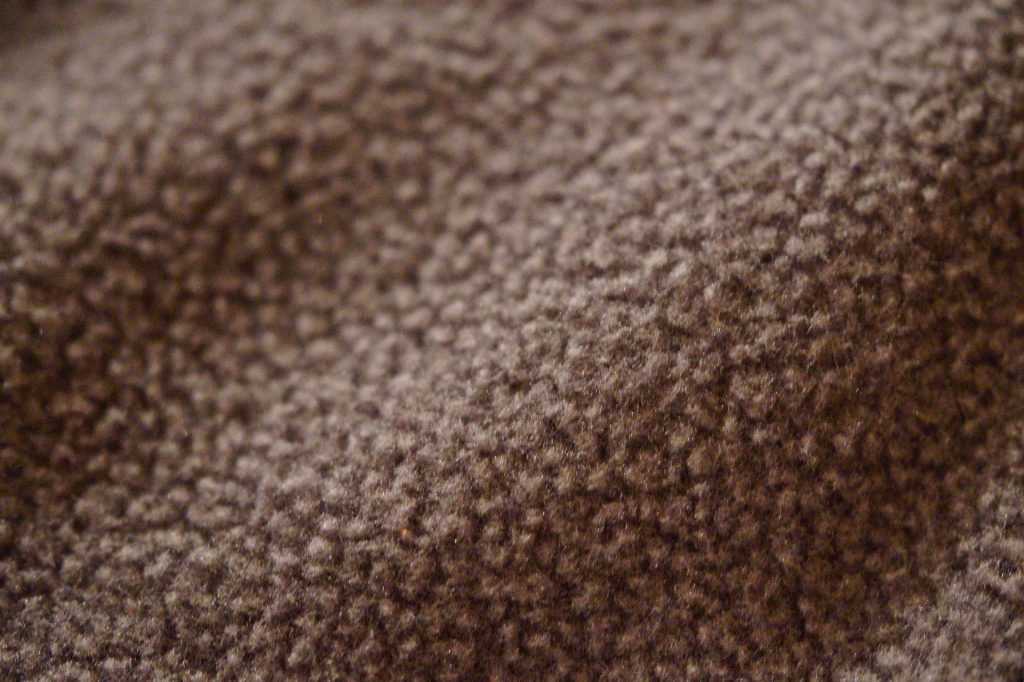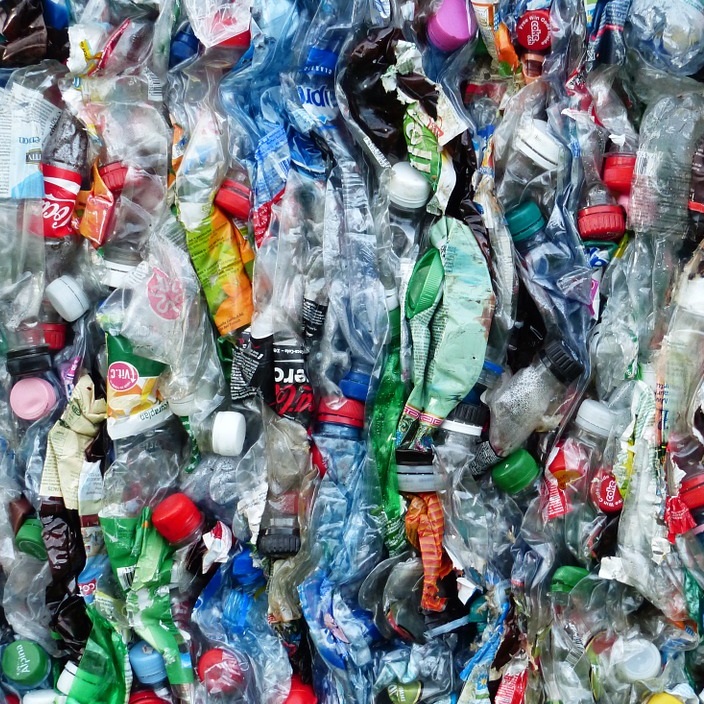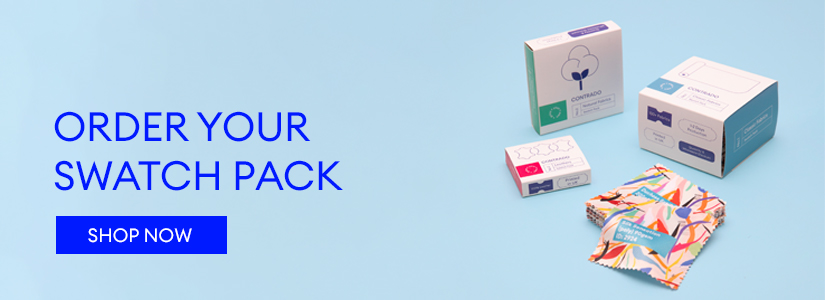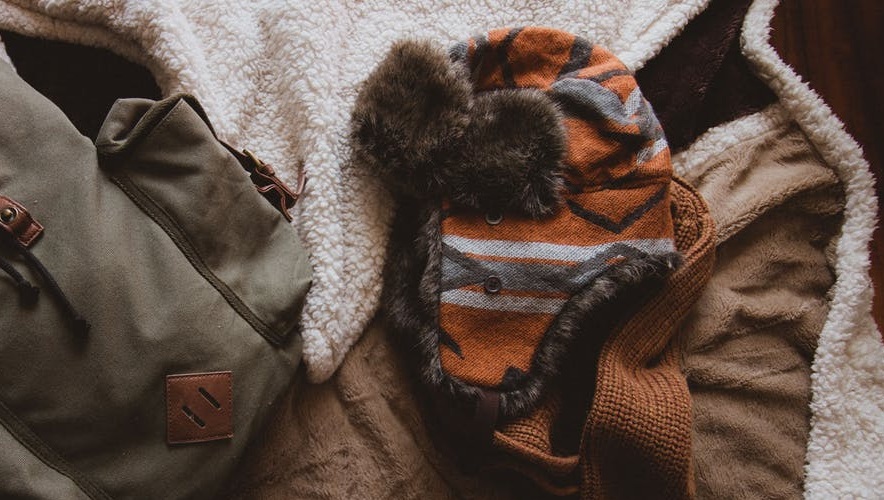What is Fleece?
Fleece is a man-made wonder product, if there is such a thing. Despite being named after the ‘fleece’ coat on a sheep, it’s 100% synthetic and derived from plastic rather than a fluffy sheep’s coat – despite being fuzzy to the touch. The super soft, warm and breathable nature of this magic material makes it perfect for outerwear and all things cosy.

What is Fleece Made From?
Typically, this fabric is created from polyester (which comes from plastic). The fibres of polyester are woven into a light fabric which is brushed to help the fibres increase in volume. Occasionally other natural fibres are incorporated into the fleece such as wool, hemp or rayon to create a certain texture or vibrancy of the fabric. It can also be made from recycled plastics such as plastic water bottles, giving it an eco-friendly edge whilst being inexpensive.

How is Fleece Made?
For polyester fleece, the polyester fibres needs to be made first. This is created using a chemical reaction involving petroleum and petroleum derivatives. The chemicals are heated until they form a thick syrup, which then hardens and is spun to form threads. Because of the structure of the fibres, fleece is extremely warm and breathable and allows air to flow through it easily.
Its Characteristics:
The characteristics of this fabric make it incredibly useful for keeping warm, particularly whilst being active. Fleece has a pile surface on both sides of the fabric, meaning each side has a layer of cut fibres. Air pockets can sit between the threads in this pile surface, meaning the material can hold in that bit more warmth.
Not only is polyester fleece warm and durable, but it is moisture resistant making it ideal for extreme weather conditions or for sportswear which it became popular for in the 1990s, due to it being warmer than wool and much lighter to wear.

What is Fleece Used For?
This fabric has been used for everything from ear-warmers for baby calves, to underwear for astronauts. It’s versatility makes it one of the most commonly used fabrics in the textile industry today.
As mentioned, fleece is the ideal material for athletic garments. The cloth wicks perspiration and moisture away from the body, keeping athletes dry, while letting air circulate through the fibres. It has also been known to keep odours from sweating at bay!
The short pile fabric increases the body temperature when it’s against the skin, making fleece the go-to fabric for warming Winter garments. Coats, scarves, gloves, blankets are often made from this lovely cosy material to create long-lasting and extra warm Winter wear.

Origins & History
Fleece originated in the 1970s when Malden Mills developed polyester fleece, which was the basis on which all modern fleece was created. Malden Mills was previously known for producing faux fur and wool garments, and the company wanted to replicate the insulating nature of these fabrics without the issues that come with natural wool (e.g. being wet when heavy, and needing sheep to create it).
Malden Mills partnered with outdoor clothing company Patagonia, together deubting Synchilla fleece – a strong, pile fabric made to imitate wool.
The owner of Malden – Aaron Feuerstein – decided not to patent fleece, allowing it to be accessible to the masses and inexpensive to purchase. Now working under the name PolarTec, the company continues to make it’s famous fleece today.
Fleece Vs Wool
Generally, fleece is preferred over wool because it is softer and much lighter in weight. Some people also find themselves itchy when they wear wool, but this reaction is unlikely to happen with synthetic polyester. However, wool has the advantage of being totally natural and environmentally friendly, whereas fleece is only eco-friendly if produced from recycled plastics.
Fleece:
- Softer than wool
- Lighter weight
- Does not insulate when wet
- Breathable
- Creates static so can attract lint and pet hair
Wool:
- Can be itchy
- Natural, environmentally friendly
- Insulating even when wet
- Breathable

Surprisingly, fleece often comes out on top, essentially being a lighter and more breathable version of wool, with all the warmth and comfort of a natural fabric.
How Easy Is It To Print On It?
Surprisingly so. If you don’t believe us why don’t you order a test print and find out exactly how easy it is. Simply upload your design, be it a photograph, piece of art or even a snap of a surface pattern you like, and position it as you want it.
Feel and explore polar fleece and over hundred other fabrics with your own swatch pack.



To avoid the itchy feeling of Wool – try a long-staple wool such as Merino Wool. This wool is very fine and light and it being used to make baby garments, underwear and “t” shirts, as well as more sophisticated garments. Because the strands of Merino wool are longer and finer than normal wool, it gives a beautiful lustre and no itching!
Hmmm……so if your “fleece jacket or blanket” is caught in a fire (hopefully not on you!) it will melt onto you. Wool does not do that!
Have they put that warning on this “fabric” so that people know?
Probably because you don’t usually wear your garments and go fighting fires. Tiny tiny chance of this happening.
Is Fleece cheaper to make then or is it about the same depending on the item being manufactured?
What you should mention as well: Fleece sheds tiny plastic fibers into wastewater when being washed. These fibers are too small to be filtered out by water treatment plants, so it will all end up in the oceans. It is estimated that a third of all micro plastic in the oceans come from consumers washing their (plastic) garments.
how common is it for a baby to be allergic to fleece?
I am allergic to it and I would in no way ever put my child in fleece, polyester or anything other than natural products. All synthetics are highly flammable and emit fumes.
Just look at what it is made from.
Buy quality over quantity
While there is a lot of wonderful information here, unfortunately this blog has one major important fact completely wrong. Fleece IS wool. Remember the nursery rhyme “who’s fleece was white as snow?” Please get this corrected and start educating people the right way. Fleece IS Wool. NOT a synthetic fabric! Anyone in New Zealand, where some of the world’s best wool is found, would agree.
Good morning Mark,
This indeed is not the case, ‘a fleece’ IS wool, but ‘fleece’ is not.
The coat of a sheep is known as a fleece, however, the fabric, Polar fleece, known often simply as fleece is an insulating fabric which is synthetic and made from polyester. It originated in Massachusetts in the late 70s.
In your example “who’s fleece was white as snow” it is referring to the fleece, or coat of Mary’s Little Lamb. It is indeed possible to get natural fleece, which is made from wool, however, that is the exception and not the rule – and this would then fall under “All that glisters is not gold”.
Thank you
Beca
Yes thank you, you have helped me on my DT test hope I don’t fail
Fleece is a fantastic material, HOWEVER, what I don’t see mentioned here, is that they shed microfibers that pollute our water every time we wash them. Synthetics are great technology in many ways, and that it’s contributing to me having plastic fibers in my gut, is less nice. Balance perspectives, it is remarkable, and personally non-synthetics work for my relationship with environment. Curious there was no mention in this article.